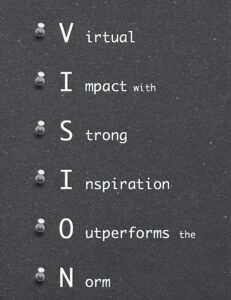Developing the leadership competencies of your staff can have a high positive impact
As a consultant and trainer I am frequently involved in training programmes to develop the leadership capabilities of employees in companies and institutes. In large companies there is often an in-company training programme embedded in a HR Academy or Leadership Academy. This is often aimed at further developing staff and prepare them for future steps. However, only a small percentage of the working population is working in these companies. It is my experience that small and midsized companies generally do not truly invest in the development of leaders in their company. That is a pity as it is known from research that a lot of people leave their company due to the negative impact of their leaders on them. the people leading them (see one report here). So, paying attention to the development of your leaders can result in an increased retention of employees. In this blog I share some thoughts on the importance of setting up in-company training for your (potential) leaders.
Is leading people a profession?
I often encounter the Peter principle (in a hierarchy every employee tends to rise to his “level of incompetence”) especially in the context of leaders. Most of the time the best specialist becomes the formal leader of the group at some stage of his/her career. And then (s)he and the people (s)he is leading find out that this person is indeed a capable craftsman, but not automatically also a capable leader. As a good specialist, this person learned to work independently, but in his/her role as a leader (s)he needs to transform now into a person that delivers through other people. This is what I call the “I – We”-paradox and which Steven Covey (e.g. in The 7 habits of Highly Effective People) labelled as the transformation from being independent to interdependent. Generally, people need to start in such a leading position without proper preparation or support. So yes, leading people is a profession on its own and needs different skills, competencies and mind set compared to e.g. a specialist. And that is something where most people really need assistance, training and coaching.
Start with the Basics
Within Con-TACT we create and deliver development programmes for leadership which have great impact and value. For small and midsized companies (as for the truly big companies), the first step in supporting the new/future leaders is to invest in the development of basic skills and competencies. At Con-TACT we call this the Foundation Level. Modules/topics to cover at this basic level include awareness of attitudes, situational leadership, team leadership, developing others, basic communication rules and insights in personal effectiveness. However, it also depends on the nature of the company and the work whether other areas are relevant to cover like e.g. leading projects in a multicultural setting. First step is really to do a proper evaluation to define the specific learning needs relevant for the specific business context. In this evaluation we would also explore what the company values are and what behaviour is preferred to ensure that leading capabilities are learned that fit with the company.
Building a learning cohort using in-company training programmes
Transforming the learning needs and company values/desired behaviour in a learning programme is the next step. Ideally, the training is designed for a group of max. 10 people in leading positions in the company/organisation. Adjusting to the educational level and the specific needs is important. It is my experience that a learning journey of 3-6 different training days with a couple of weeks in between the days and with limited homework in between the sessions gives good starting results. By working together as leaders in this programme, where you really work and learn together, develop skills and competencies, exchange experiences and share issues and problems, results in a kind of learning cohort. Important in this respect is that in the initial phase attention is paid to generating a psychosocial safe climate where people can be open and are willing to share, give feedback to each other and help each other. Facilitation of this process is key in our programmes. If wanted and needed, the programme can also be combined with individual coaching, a combination we frequently use with good success.
Alternatives?
Alternative is to “send” people to an open training at an external institute to let them learn specific skills and develop competencies. However, you generally miss the group forming in that approach which is really a missed opportunity. Moreover, this approach of using an external open training is not tailor-made to the specific needs of your people, nor to specific wishes you have related to your desired company culture.
Conclusion
To conclude, it is my firm belief that leading people correctly is extremely valuable. However, it is not as simple as often thought. It is more an art than a set of skills where people also need to develop their own style. Defining the right in-company training can facilitate this interesting transformation.
If you want to discuss this subject further feel free to get in touch with me direct or you can check our Virtual Leaders Lounge agenda for similar interesting subjects.
Join us online! 
We explore this and other business relevant subjects in our Virtual Leaders Lounge. This is an informal online meeting of maximum 10 business leaders where we discuss challenges in virtual teams and organisations and share best practices. No PowerPoint is used, no prep work required!
Check it out here or register direct so you get the invitations and have a chance to get one of the 10 seats available for a lounge session.




